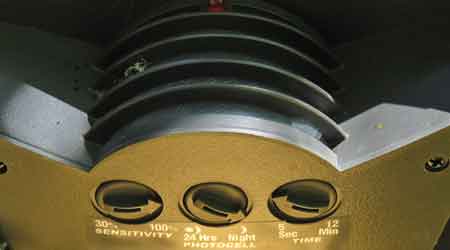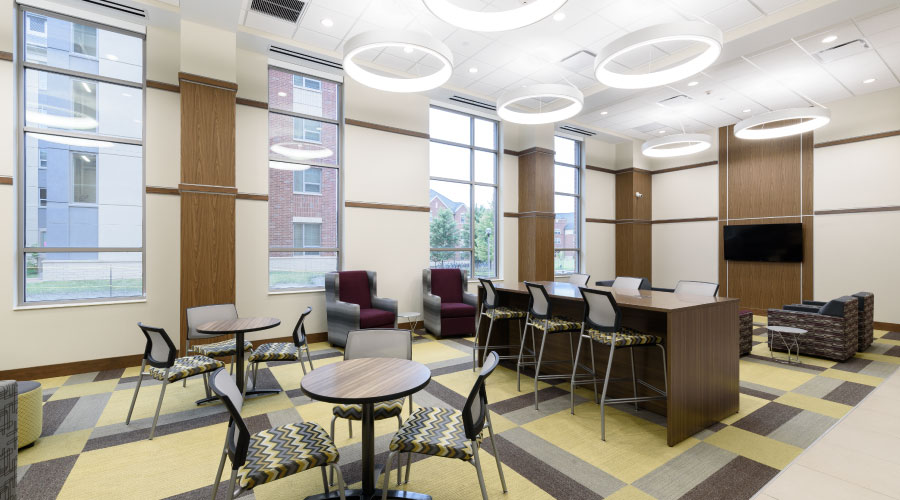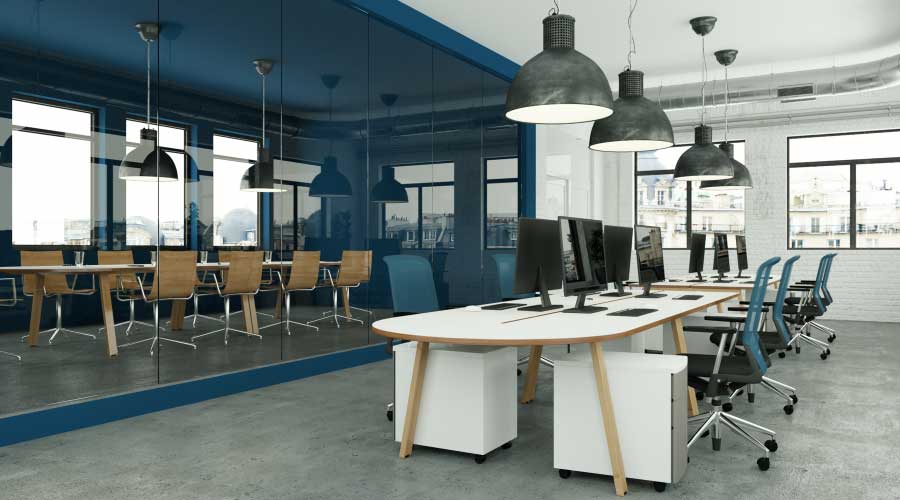Occupancy Sensors: Best Practices for Product Selection
Here's what to consider when selecting occupancy sensors and exterior lighting controls products.
Occupancy controls typically allow facility managers to choose time delays from one of several settings. Some devices allow the time delay to be adjusted with a dial, so you do not know the setting unless you test it. If you have not bought occupancy controls yet, make sure to choose a control that allows you to go as short as you want.
Occupancy sensors can either be stand-alone, to control one or more light fixtures, or they can be integrated into light fixtures.
Exterior lighting
Exterior lighting can benefit from a combination of photosensors and occupancy sensors, and many controls combine both for this purpose. The photosensors ensure that the lights are off during the day. And the occupancy sensors keep the lights off at night, except when needed for people who are passing by. Historically, facility managers used one or the other, but not both, and more often than not used photosensors, which has meant that lights stayed on all night. Occupancy sensors reduce this runtime from “all night” to “just when people pass by, plus the off-delay.” So, again, if people are passing by every 30 minutes all evening, then the lights stay on all evening, and savings are only from end-of-evening till dawn. But if the time delay is reduced, facility managers can see significant additional savings through the evening hours.
An increasingly common approach with exterior LED lighting and occupancy sensors is to have the lighting ramp up and ramp down, rather than instantaneously turn on and off, and this approach delivers both good energy savings and customer satisfaction.
The energy code is starting to catch up to these savings. For example, for most types of exterior lighting, the code now requires the maximum time delay to be 15 minutes, instead of 30 minutes. And the code calls for most types of lighting to be reduced by at least 30 percent between midnight and 6 a.m. But these improvements don’t come close to delivering the full potential energy savings, and facility managers don’t need to be limited by the energy code. To maximize savings, facility managers should use occupancy sensors and crank down those time delays — down to 5 minutes at most, and even consider going down to 1 minute. There’s no need to light the outdoors when nobody is out there.
How short should the time delay be? That might depend on the application. Spaces with active occupancy, such as corridors and stairwells, can use shorter time delays of five minutes or less. Applications such as parking lot lighting might deserve longer time delays, to give people time to walk from their cars to a building, when they might be moving out of range of the occupancy sensor. But even in these applications, longer time delays such as 15-30 minutes are simply not needed.
Cost versus benefits
What do these changes cost? If a facility already has occupancy sensors, this is just a change to the setting, and there’s no cost at all. For facilities that are planning an LED retrofit and were not thinking of occupancy sensors, the sensors can be added at modest extra cost to the project, and no added cost to then reduce the time delay once the controls arrive. Facility managers might even consider using bi-level lights with built-in occupancy sensors, at an added cost of about $100 per fixture for both the occupancy sensor and dimmer driver. And even if a facility has already upgraded to LED lighting but didn’t install occupancy sensors at the time, the payback is so good that it is worth the cost of adding occupancy controls, especially for low-occupancy areas like stairwells and exterior lights, and then reducing the time delays.
The key to getting time delays right is in commissioning. Specifications for installing occupancy sensors should call for an exact delay, whether it’s 5 minutes or 1 minute or shorter. Specifications should also call for commissioning the sensors, to confirm that the time delay has been set correctly.
Ian M. Shapiro (imshapiro@taitem.com) is the founder of Taitem Engineering, Ithaca, N.Y., and is the author of the books “Green Building Illustrated" and “Energy Audits and Improvements for Commercial Buildings.”
Related Topics:













